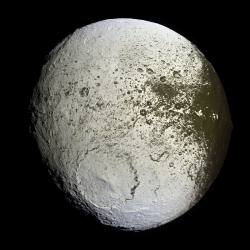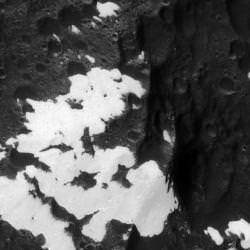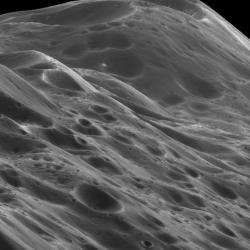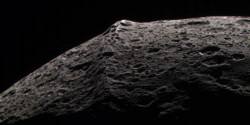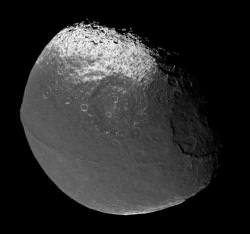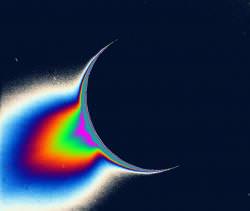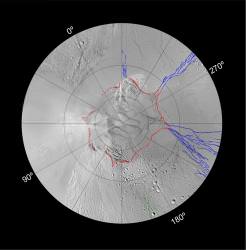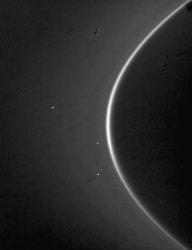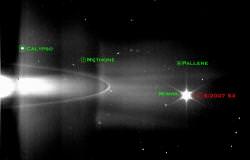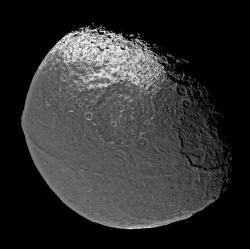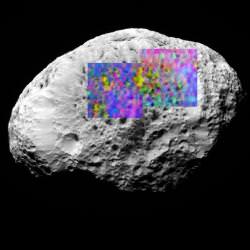Saturn’s moon Iapetus is one of the most mysterious objects in the Solar System. It’s shaped like a football, has a strange ridge that runs along most of its equator, and it’s got vastly different hemispheres. One side is as white as driven snow, and the other side is dark as tar. Scientists think they’ve at least got an answer for this last mystery.
Even before humans sent spacecraft to Saturn, astronomers have known there’s something bizarre about Iapetus. Its brightness changed significantly depending on its facing towards the Earth. Follow up observations with spacecraft, like Voyager and Cassini showed that this was because half the moon is covered in snowy white material, while the other half is dark as night.
During its most recent flyby, NASA’s Cassini spacecraft confirmed that Iapetus is warm enough on the dark side – 127 Kelvin (-230 F) – that water vapour can slowly release from water ice. This vapour then travels around the moon, and freezes back down onto the white side. This process of vaporization and accumulation is called “thermal segregation”.
So where does the dark material come from? Astronomers think that it didn’t originate on Iapetus, but instead came from the surrounding outer moons. As Iapetus goes around its orbit, this darker material piles up on the leading hemisphere. The material heats up the surface of moon, allowing it to release the water vapour which then reforms on the other side.
Scientists describe this as a runaway process. Once it got going, both hemispheres went to extremes. The water completely boiled away from the dark side, and then accumulated on the bright side. You don’t see shades of grey, just black and white.
Thanks to Cassini’s recent flyby, planetary geologists think they’re getting a handle on the moon’s strange football shape and the equatorial ridge too, but those will come with future research papers.
Original Source: NASA/JPL/SSI News Release

